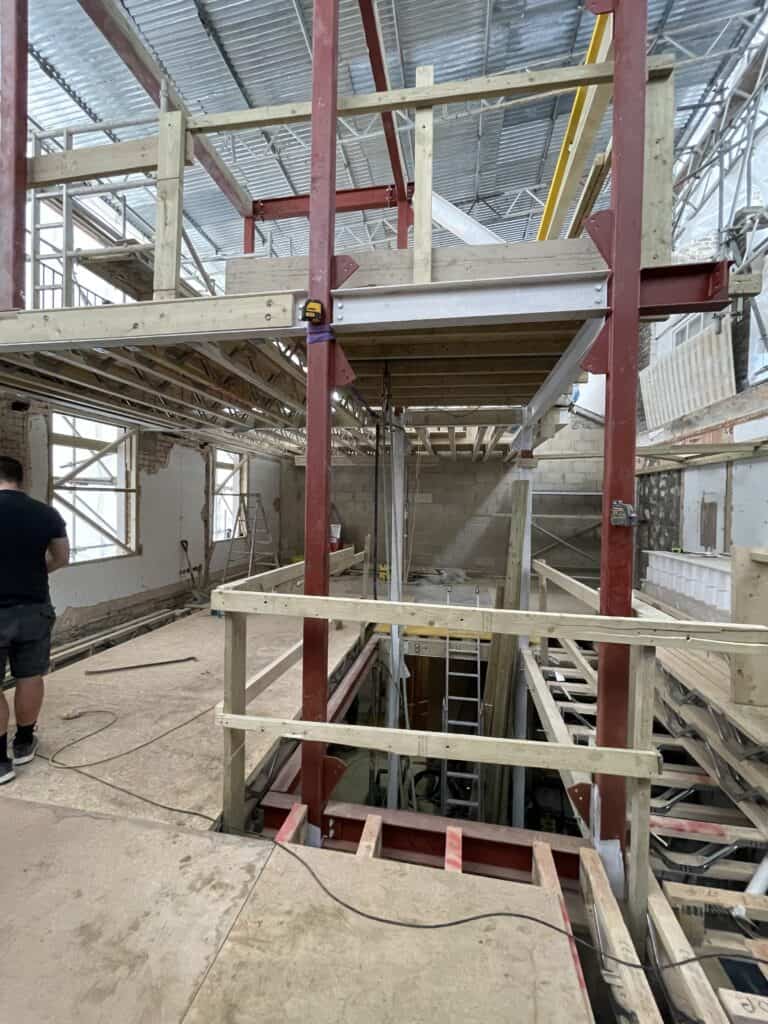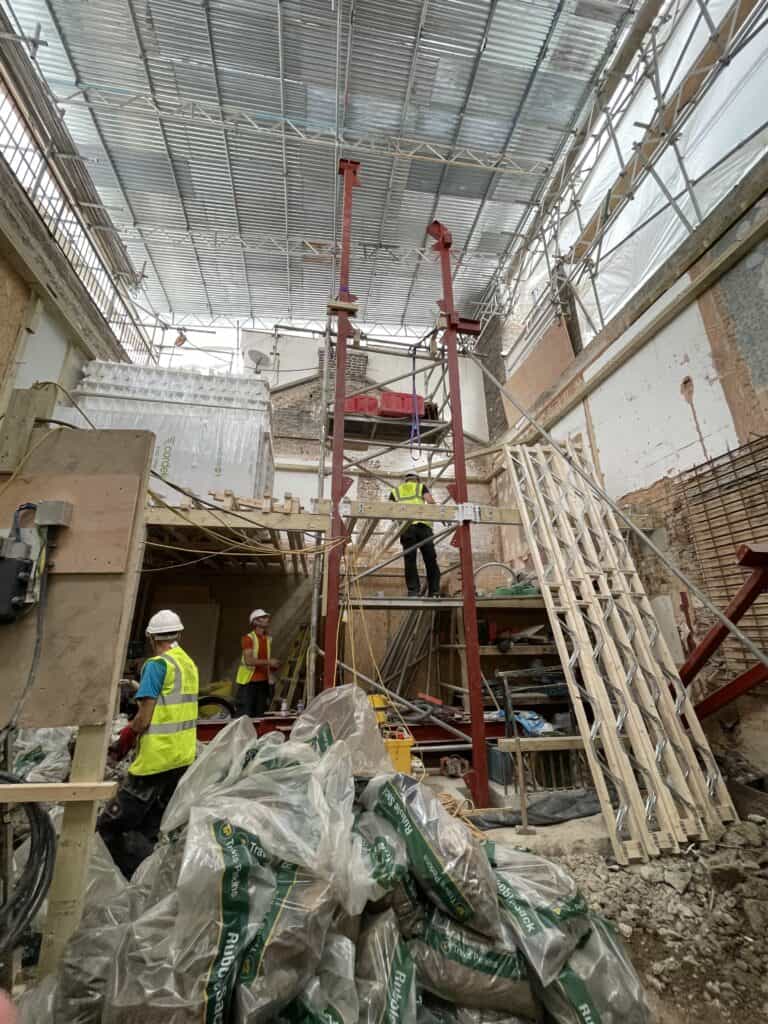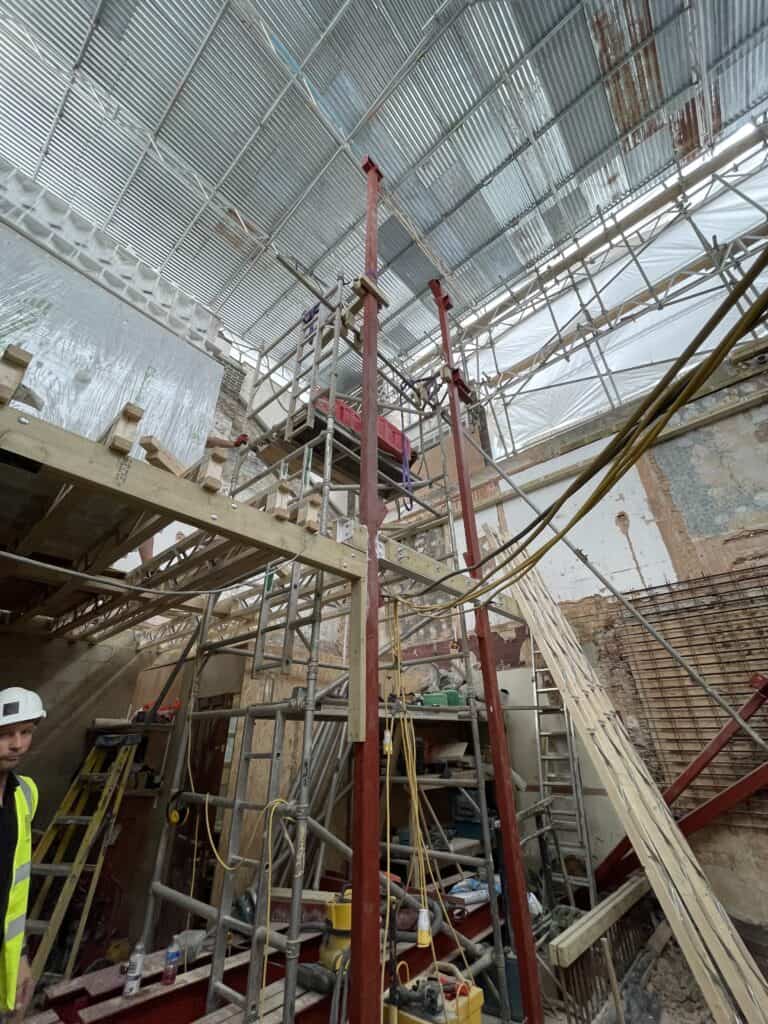Do you meet the demolition test?
Our recent Mews house project in Knightsbridge, London is one that does. The existing building was demolished behind a retained and altered façade. This is a very complicated process and how HMRC determine whether a new build is truly a new build in VAT terms is pedantic.
Base rule
The main test that we need to meet is the Demolition test, whereby in is most simplistic guise requires the existing building to be demolished in full, down to ground floor slab – allowing it to keep footings, foundations and even basements.
Detailed rules
There are however exceptions; we can retain
- party walls (but not boundary walls)
- a single façade (or double façade if a corner site), but in very specific circumstances.
This is where the first problem can occur – understanding what HMRC mean by ‘party wall’ and ‘façade’, and whilst we are at it ‘corner site’.
A party wall separates two dwellings, whereas a boundary wall (unhelpfully often covered by the Party Wall Act) is ‘just’ shared ownership; the rear of a mews house for example that doubles as the garden wall for the principal house.


A façade is defined as ‘the street facing elevation’ and this conveniently allows us to define a corner site as having street facing elevations.
So now we have established the type of structure that can be kept, what are the specific circumstances that allow us to deviate from the ‘demolish to slab’ rule.
Application to real life
What HMRC say is that if you are prevented form demolishing the façade (or facades if on a corner), then to all intents they are prepared to ignore these walls and still view the project as a Demo & Rebuild. This is the first point where the significance of Planning & Design come to the fore – it is imperative that the planning documents reflect that it is truly a planning-led retention – for example to adhere to Local policy / Conservation Area rules; rather than a design-led retention to match the client’s needs (or to make the planning application less contentious !).
You do not need to submit an application for full demolition and wait for it to be rebuffed to prove such a thing, as HMRC do allow a pro-active application that addresses pre-known planning requirements, but if these are not documented and proven – then VAT is due in full. Ouch.


What should the Planning Document contain ?
- Clear annotation on the plans as to the walls to be removed
A recent case was only won due to the clear ‘ghosting’ of walls to be demolished.
- Clear language within the D&A / Heritage Statement / Application to reflect full demolition and rebuild.
No language or vocabulary that could indicate works to a retained building or any ‘subtlety’ on the extent of demolition.
- A reason as to which Policy or reason that forces the design to retain the facade.
- A statement on the plans that the ‘façade is to be kept in line with Local Policy.
And now we come to the 2nd point where Planning affects design:
- No ‘demolition by stealth’ !
Whereby the plans and application (or multiple plans) overall result in ‘near’ demolition, with the remainder removed once structural weakness is identified
It is only Consented Demolition & Rebuild projects that can be Zero Rated – after such consent has been granted. So to take the example above, in order to be Zero rated the whole project would need to go back to planning arguing for full demolition, and only when consented would subsequent works qualify for the Zero rate of VAT.
Mitigation
HMRC do not visit sites or consider site photographs as evidence – the only documented evidence is the consented scheme, proven by plans & documents submitted (and consented) by the planning authority.
If the evidence is not within this, or is ambiguous, the default position of Standard Rated VAT will occur.
Taking the time to talk to your architect about how the VAT rules can be evidenced within the planning documents build on VAT requirements however pedantic.
Application to Other schemes
There is not so much pressure on Design & Planning for Reduced Rate projects, as these are more about pre and post construction use, as opposed to the degree of physical construction; but it is worth noting that care is required for Conversions to ensure the prior or earlier use is reflected in the application – especially pertinent for HMO to House conversions.
You can find more information on VAT relief on the HMRC website here: https://www.gov.uk/guidance/construction-services-and-zero-rated-relief-vat-information-sheet-0717
Discuss your project
If you are thinking of buying a site or property or plan to renovate and extend an existing home, we can help you navigate this complicated process.
